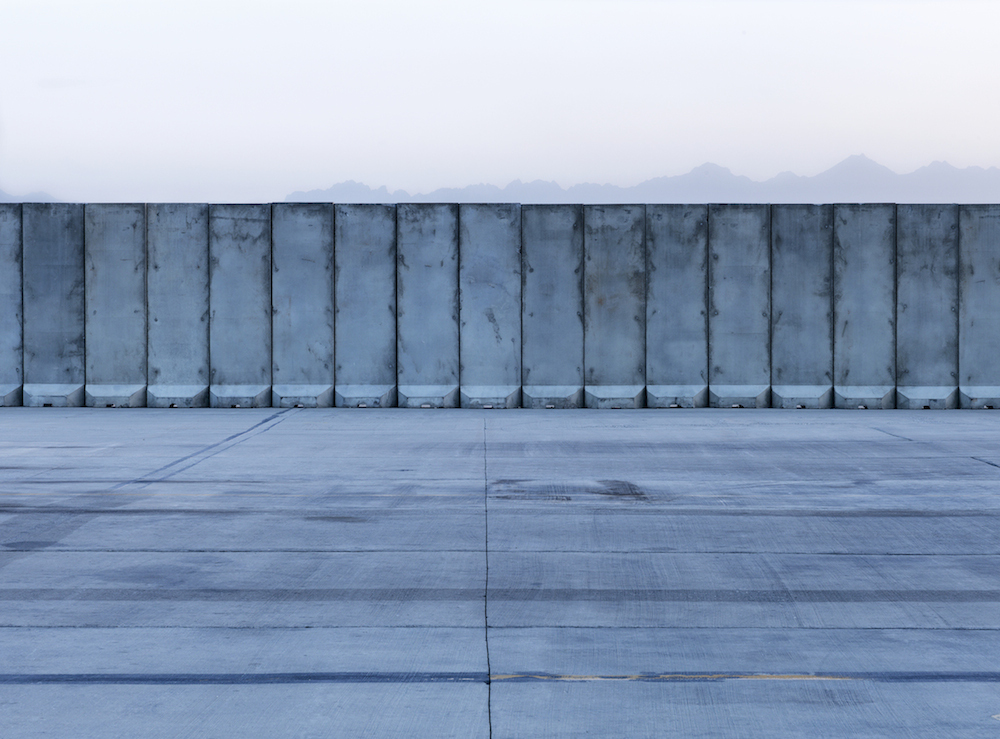
From The Mountains of Majeed, by Edmund Clark. All imagery courtesy of Flowers Gallery
Photographer Edmund Clark’s latest project, The Mountains of Majeed, examines the visual life experienced by the 40,000 military personnel and contractors living at Bagram Airfield, America’s largest base in Afghanistan.
The visual environment both outside and inside the base is dominated by the peaks of the Hindu Kush – a mountain range occupied by the Afghan resistance. 40,000 personnel call Bagram home, but over the nine days Clark spent on the base, he realised that few workers – besides the small portion of security-cleared locals – had ever ventured beyond the base perimeters.
Videos by VICE
The workers’ sense of Afghanistan’s physical landscape was restricted to the tips of the mountains of the Hindu Kush visible beyond the wires and through the local paintings that hang on the walls of the mess halls. The mountains exist as a foreboding reminder, though, that foreign occupation isn’t, and never was, welcome in Afghanistan.
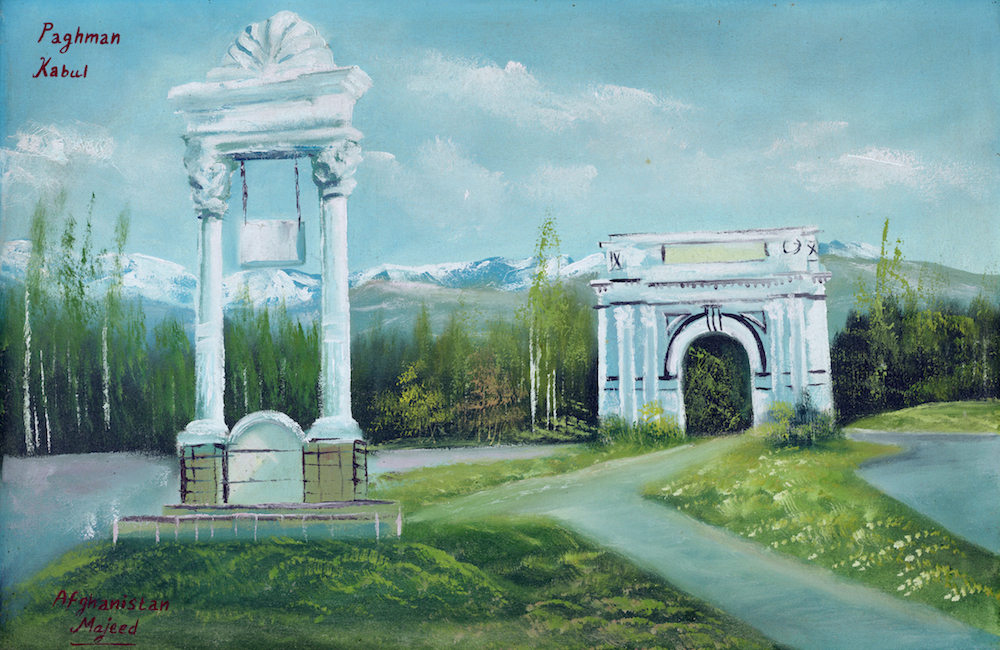
Paghman, Kabul, by Majeed, from The Mountains of Majeed
In the beginning of the photo book, a Taliban poem called Afghanistan is the Home of Afghans encourages us to remember the strength of local fighters.
Afghanistan is the home of Afghans
Foreigners won’t be able to weaken it by force;
These mountains are ours and we belong to these mounts;
This is the home of Allah’s great lions.
The invading forces will eventually leave;
This is the home of strong heroes.
This is the home of the eagles.
Jackals can’t hold out here
In his book, Clark explores the military disconnection with the landscape by juxtaposing the rudimental paintings of the mountains by an unknown Afghan artist called Majeed with his high-tech photography. It pits a romantic, mythical view of the local landscape pre 9/11 Afghanistan with the limited snapshot of the country the foreign personnel are living in.
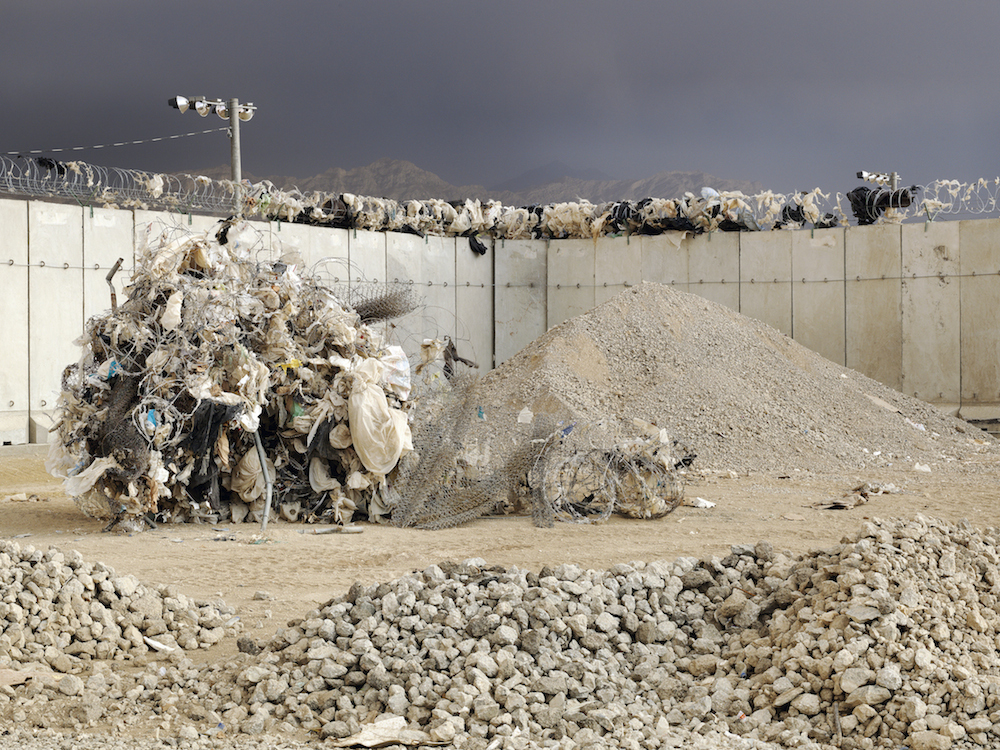
At Bagram airbase
“We don’t see the war from the other side,” says Clark. “The Mountains of Majeed focuses on two sets of mountains – those captured by myself using a high-tech camera and the low-tech paintings of Majeed, which were exhibited around the base.”
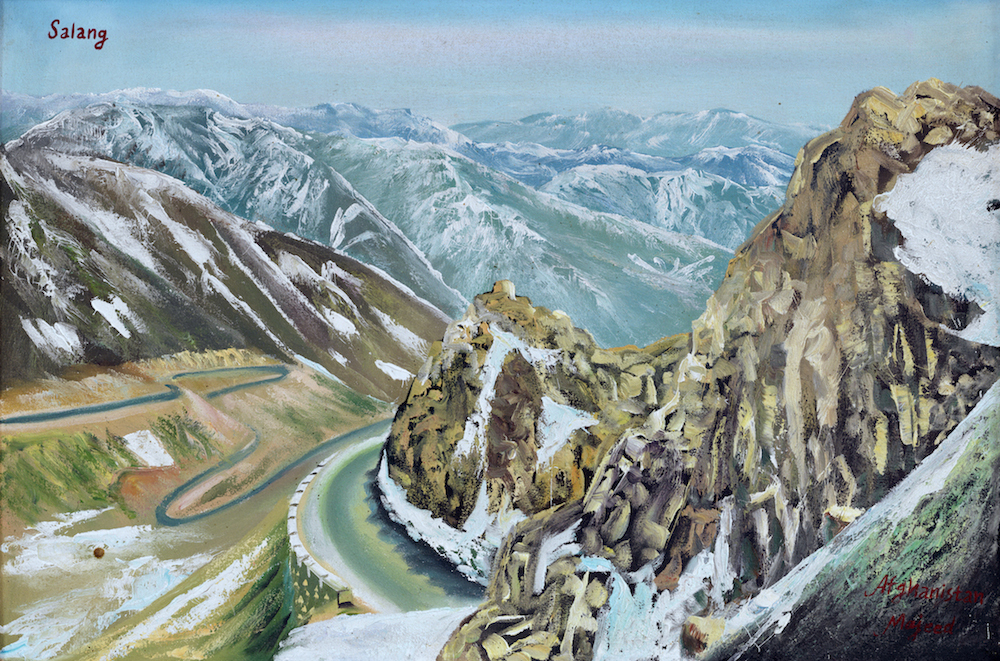
Salang, by Majeed
One set of pictures captures the view from inside – “the experience living on the base and never leaving, captured, essentially, by an occupier” – and the other is simple wood, canvas and board, a local Afghan showing how he interprets his native landscape.” In doing so, Clark highlights the gulf between the occupiers and the inhabitants – in both perspective and technology.
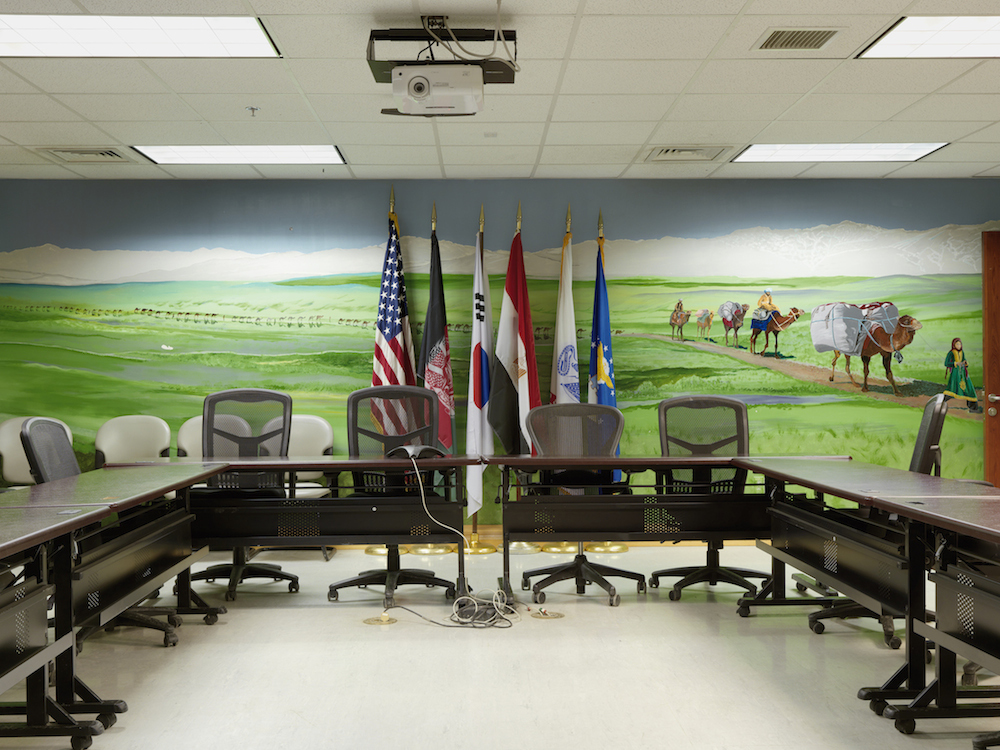
A meeting room at Bagram with a mural by an unknown artist
“I knew nothing about Majeed,” says Clark – something he felt was important. “I asked if anyone knew how these paintings had gotten there and no one did. But through my ignorance of him, he becomes universalised. He becomes all Afghans.” Because, while Operation Enduring Freedom is a war on terror, for much of Afghanistan, it’s also a war on resistance.
The Mountains of Majeed is at Flowers Gallery, London E2 from 27th February to 4th April
More like this:
Photographing the Middle East in Peacetime
Shoes, Bullets and Backpacks – Every Object Found on the Mexican Border Represents a Tragedy

